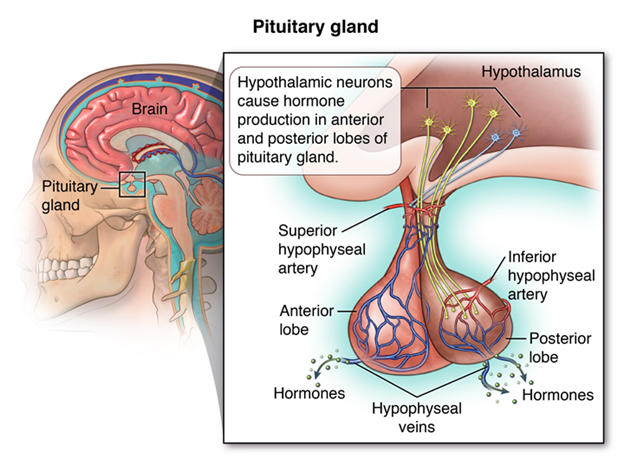Pituitary tumors can seem daunting since they affect the brain’s crucial hormone-regulating gland. These tumors influence our body’s balance in numerous ways. However, gaining a clearer understanding can support patients and their loved ones. Our blog aims to offer helpful insights into the detection, treatment, and management of pituitary tumors. By breaking down complex ideas into simpler ones, we aim to arm readers with the knowledge to face this often confusing medical condition with confidence and hope.
An Introduction to the Pituitary Gland and Its Significance
The pituitary gland, though small, plays a huge role in your body. Located at the base of the brain, it’s often dubbed the “master gland”. Why? Because it produces hormones that control various processes in the body. These hormones regulate anything from growth to metabolism and even our stress levels.
Here’s a quick rundown: – It helps regulate physical growth through growth hormone. – It controls thyroid functions which impact energy and weight management. – It manages stress through the release of cortisol.
Without this gland, our bodily functions would be in disarray—demonstrating its critical importance. The balance maintained by the pituitary gland ensures everything from growth to energy levels runs smoothly.
Unpacking the Causes of Pituitary Tumors
Pituitary tumors often lead to a web of questions regarding their origins. Most of these tumors are benign, known as pituitary adenomas. They happen for reasons not entirely understood but are rarely cancerous.
Several factors could increase the risk of developing one: – Family history or genetic predispositions. – Hormonal or metabolic disorders that can lead to growths. – While prevention isn’t always possible, maintaining a healthy lifestyle might help lower risks.
Genetics can play a part, but lifestyle factors are also significant. Maintaining awareness is crucial in understanding potential pituitary tumor causes.
Recognizing Pituitary Tumor Symptoms and Their Impact
Recognizing the symptoms of a pituitary tumor early can make a big difference. These tumors can be functioning, affecting hormone production, or non-functioning, where growth itself causes issues. Here’s what you might notice:
- Hormonal changes: Unexpected weight changes or shifts in energy levels.
- Physical symptoms: Vision problems or noticeable changes like the growth of certain body parts.
The emotional load of dealing with these symptoms can’t be understated. Many experience anxiety or depression due to the changes and uncertainties. Understanding these factors early can help manage the emotional rollercoaster that often accompanies these medical challenges.
Pituitary Tumor Diagnosis: What Patients Can Expect
If there’s a suspicion of a pituitary tumor, knowing the steps involved can ease worries. It starts with an initial assessment by a healthcare professional, looking for symptoms and your medical history.
- Tests and imaging: Blood tests to check hormone levels and possible imaging scans like MRI.
- Consultations: Meet specialists to evaluate what the tests reveal.
These diagnostic steps form a clear pathway to understanding more about any potential pituitary tumors. This knowledge empowers patients to take part in their own health journey.
Treatment Horizons: Navigating Options for Pituitary Tumors
Once diagnosed, what treatments are available for pituitary tumors? Patients have several paths to consider.
- Surgery: Precision techniques often remove small tumors effectively.
- Radiation therapy: Used if tumors return or surgery isn’t an option.
- Medications: Some drugs can reduce tumor size or manage hormone levels.
New treatments are in constant development, offering hope and new possibilities. Patients finding the right mix of treatments can emerge successfully from this challenging journey.
Navigating Life After a Pituitary Tumor Diagnosis
After a diagnosis, adjusting to life is the next step. Here are some tips:
- Daily routines: Managing symptoms and maintaining health by following medical guidance.
- Support systems: Access mental health resources and find community support.
- Inspiration: Recovery stories highlight resilience and strength.
Having a support system can make a vast difference in dealing with the aftermath of a pituitary tumor diagnosis.
Conclusion: Emphasizing Continued Research and Patient Advocacy
In conclusion, understanding pituitary tumors—from their symptoms to treatments—is crucial. Continuous research plays a key role in improving patient care and treatment options. Patients must also embrace proactive communication with healthcare providers to tailor their care plans effectively. With informed families and dedicated research, tackling pituitary tumor symptoms and causes becomes more manageable, empowering everyone involved in the journey.

